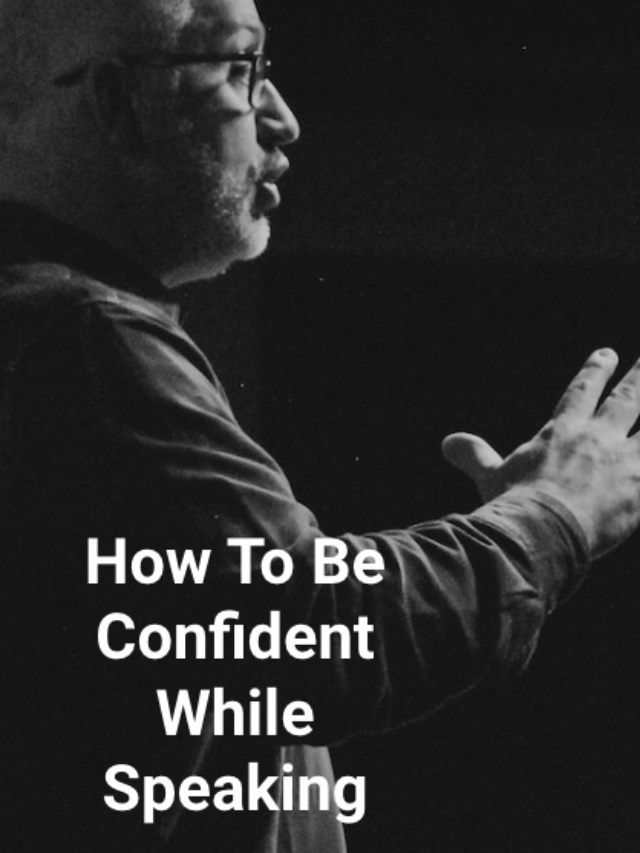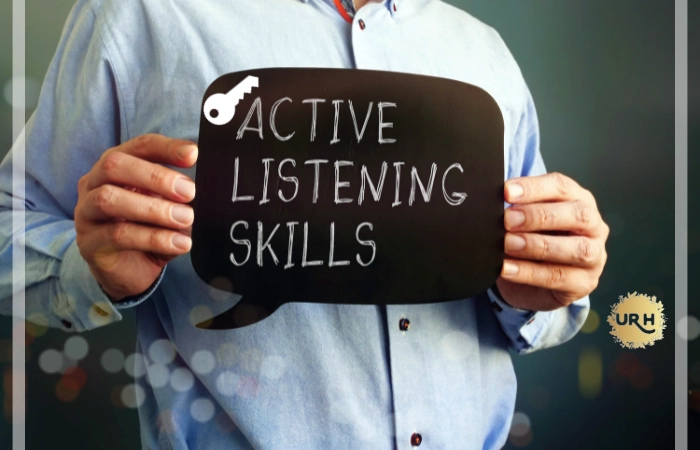How To Be Confident While Speaking – Let’s Explore
Have you ever experienced yourself stumbling over words or feeling your heart race when speaking in public? Let me tell you, You are not alone, many people experience the same nervousness and self doubt. So the question is how to be confident while speaking in public.
The answer is “confidence” and the good news is confidence is a skill and you can learn it by following some steps and practice.
I am going to help you let know more about confidence building and take some home work to practice.
Today we will go through six practical steps to help you become a more confident and effective communicator, these six steps will empower you to overcome your fears and be confident while speaking.
How To Be More Confident While Speaking?
Being confident while speaking is a skill that can be learned (by observing others delivering a speech) and developed through regular practice (habits).
I have listed down six practical steps that can help you to speak with confidence and leave a lasting impression on your audience.
Step 1: Embrace Self Awareness:
The very first step to speaking confidently is to develop self-awareness.
Understand your strengths, weaknesses, and areas for improvement as a speaker, you can do this by asking for feedback every time you deliver the speech or through your practice sessions.
Go through your past experiences, and identify any patterns of self doubt. Also, look at the unique qualities like the way you prepare your content or the visuals during a speech that makes you an effective communicator.
Step 2: Preparation is Key:
Confidence in speaking comes from being well-prepared.
Take the time to thoroughly research, read related articles/books, and organise your content like your presentation/visuals.
Prepare an outline or script to guide your presentation, how you will start your presentation, ensuring a clear flow of ideas (the questions you will ask in between).
When you are well prepared, you can approach speaking engagements with confidence and ease.
Step 3: Practice, Practice, Practice:
Practice is the bridge between preparation and confidence.
Rehearse your presentation multiple times, both in front of a mirror and with a trusted friend or family member. Watch/observe your body language (ask for feedback), pacing, and your voice modulation.
The more you practice, you will become natural and comfortable when facing an audience
Step 4: Embrace Nervous Energy:
It is OK for you to feel nervous before speaking (many will agree), even for seasoned speakers it is true.
Instead of trying to eliminate nervousness, use it as a source of energy, take a few deep breaths before starting your speech. So, reframe your nervousness as excitement and let it fuel your performance.
Step 5: Visualize Success:
Visualisation is a great tool for building your confidence, close your eyes and visualise yourself speaking confidently and interacting with your audience.
Think about the positive reactions, the audience is liking your speech (applause), and the sense of accomplishment.
Step 6: Learn from Experience and Ask For Feedback:
Your every speaking opportunity is a chance for you to learn and grow.
Embrace feedback from others, it can be from from mentors, office colleagues, or even audience members. Evaluate your own performances objectively, identifying areas for improvement and celebrating your successes.
With each speaking experience, you will become more confident and resilient.
Remember that being confident while speaking is not an overnight achievement but a continuous journey of growth and self-discovery.
What Are Speaking Skills?
Speaking skills include a range of abilities that allow individuals to express themselves effectively and confidently through spoken words, like command over spoken language, vocabulary.
In order to enhance and develop them it is very essential to understand them in the first go.
1. Clarity And Articulation

One crucial aspect of speaking skills is the ability to communicate clearly and articulate your thoughts in simple and clear words. This will help your audience to get the message easily.
While speaking you need to maintain proper pronunciation and use appropriate diction (The choice and use of words).
If you are giving a presentation/demo about a new product, you need to help your audience to understands the product features (whether it is a physical product or virtual product), benefits, and unique selling points (USP).
2. Body Language And Non Verbal Communication

Speaking is about words and also about how you present yourself physically (grooming your dress).
Your body language plays a significant role in conveying your confidence through facial expressions, the way you walk in front of the audience, and engaging the audience by active involvement (asking questions to the audience).
For instance, when delivering a persuasive speech, maintaining eye contact with your listeners and using open and relaxed body language can create a sense of trust and credibility.
3. Vocal Delivery

The way you use your voice while speaking can greatly influence the impact of your message, don’t be loud or too low.
Your vocal delivery includes aspects such as tone (be normal), volume (don’t be to loud), pace (Don’t go fast), and emphasis.
For instance, if you’re delivering a motivational speech, using a passionate and energetic tone can inspire and captivate your audience.
On the other hand, a calm and soothing voice may be more suitable for delivering a message of empathy or relaxation.
4. Active Listening And Responsiveness:

Effective speaking is about talking and also about being a good listener. How to be more confident while speaking, one of the secrets is, you need to practice active listening which involves attentively understanding others’ perspectives, responding appropriately, and engaging in meaningful conversations.
For example, during a team discussion, actively listening to your colleagues’ ideas and responding thoughtfully can foster collaboration and generate better outcomes.
5. Confidence And Presence:

Confidence is a key ingredient for successful speaking.
It involves believing in yourself (you can do it), your message, and your abilities, as you have worked to prepare the content and yourself through practice to deliver this speech.
When you speak with confidence, you demonstrate a sense of authority and credibility (that you have the subject knowledge) which can captivate/engage your audience.
For instance, imagine delivering a keynote address at a conference. Projecting confidence through your body language, voice, and demeanor will make the audience more receptive to your ideas.
6. Adaptability and Flexibility:

Effective speakers possess the ability to adapt their communication style to different situations like your mike system stope working.
You can gauge the needs, preferences, and cultural backgrounds of Your listeners, you can do this by asking simple questions and requesting to raise their hands and then you can adjust your speech approach accordingly.
If you are flexible in your speaking style, it will help you to connect with audiences, for instance, if you’re speaking to a group of students, you may use more relatable examples and interactive elements to engage them effectively.
FAQ – How To Be Confident While Speaking In Public ?
How can I overcome nervousness while speaking ?
To overcome nervousness, practice your speech or presentation thoroughly, visualise success, embrace your nervous energy as excitement, and focus on your message and audience rather than your own self-doubt.
What body language techniques can help me appear more confident while speaking?
Maintain good posture, make eye contact with your audience, use natural hand gestures to emphasise key points, and adopt open and relaxed body language to convey confidence.
How can I handle unexpected questions or interruptions during a presentation?
Be prepared by anticipating potential questions, stay composed and actively listen to the question.
If necessary, ask for clarification or request to address the question later if it disrupts the flow of your presentation.
How do I engage and connect with the audience?
Connect with your audience by
starting with a compelling opening,
using relatable examples or stories,
maintaining eye contact,
asking questions (which has short answer yes/no)
Conclusion:
So, if you are stumbling over words or feeling nervous when speaking in public, you are not alone, many people experience the same nervousness and lack of confidence.
Speaking with confidence is a skill and you can learn it by following some of the above steps and practice it regularly (habits) .
Take the time to research the topic, read related articles/books, and organise your content like your presentation/visuals well before your event date.
So now you know how to be confident while speaking, most important practice, practice, and practice.
Let me know if you have any funny incidence in public speaking experience, or your thoughts on it in comment section below.








